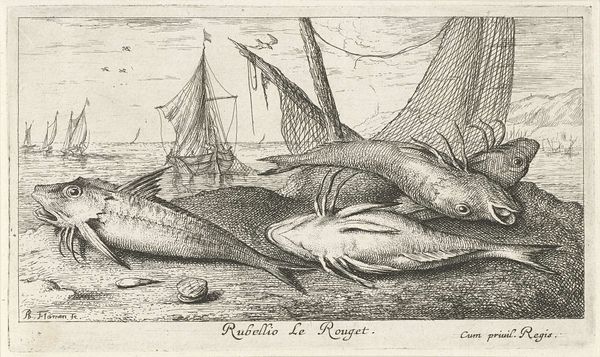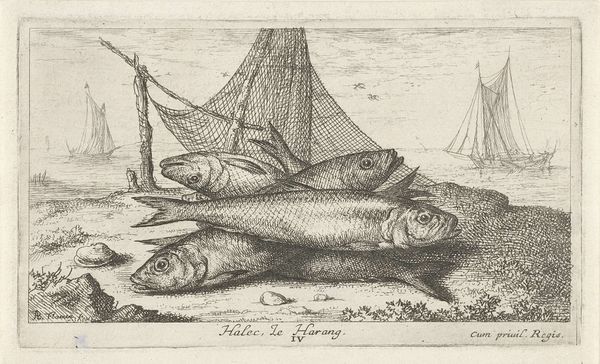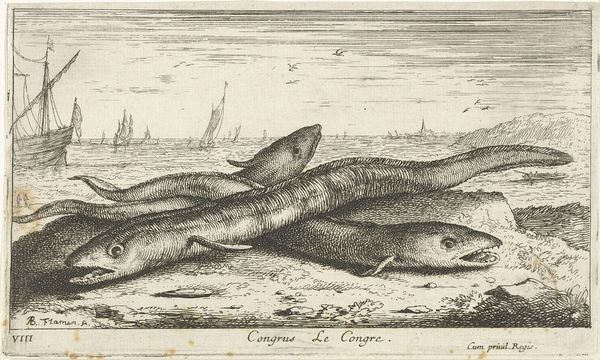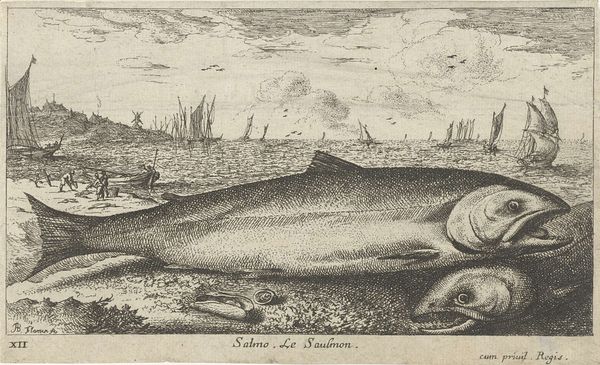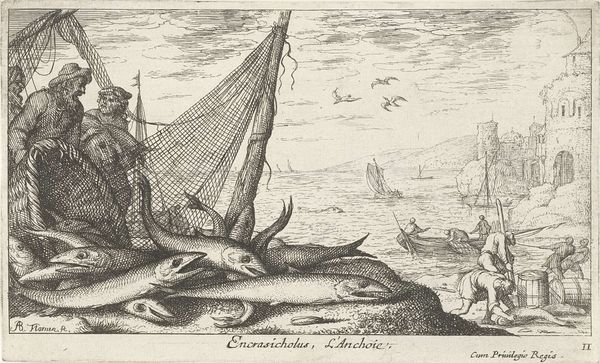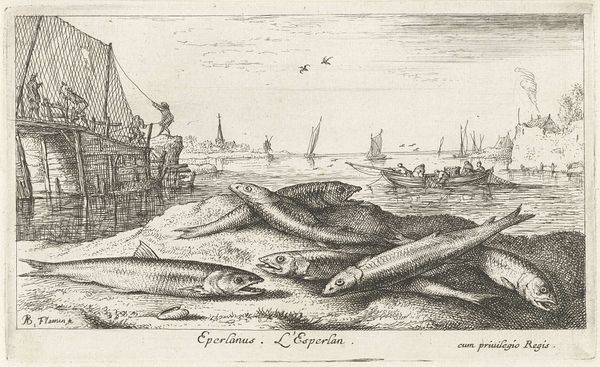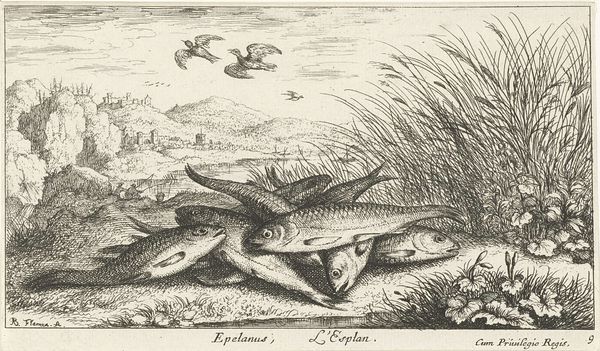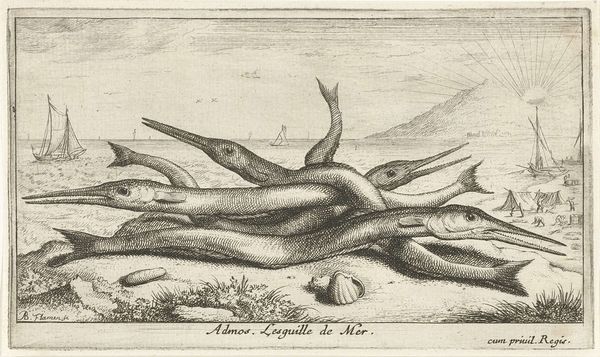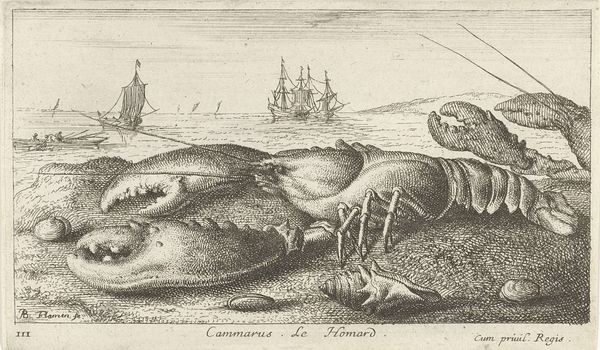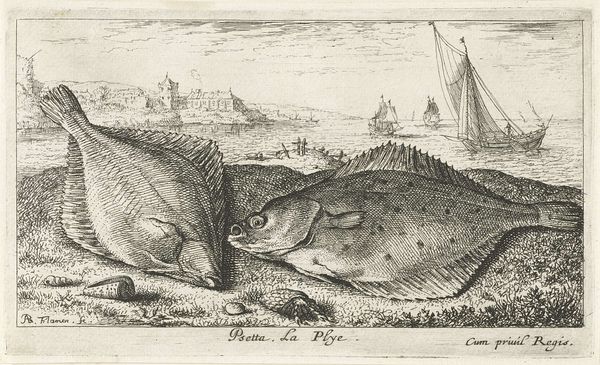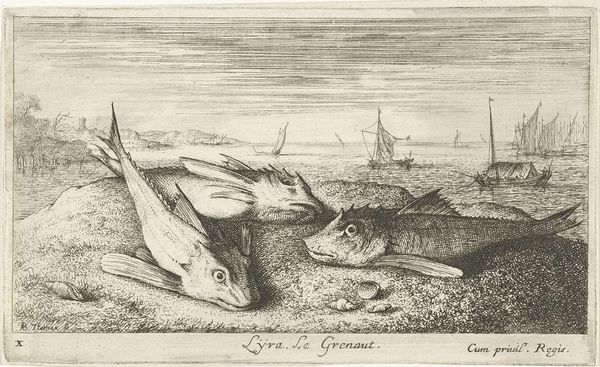
print, etching
#
baroque
# print
#
etching
#
landscape
#
genre-painting
Dimensions: height 107 mm, width 175 mm
Copyright: Rijks Museum: Open Domain
Editor: So, here we have "Sardines op het strand," or "Sardines on the Beach," an etching by Albert Flamen from 1664. I’m immediately drawn to the contrast between the pile of glistening fish in the foreground and the flurry of activity with people, boats, and huts further back. What social dynamics do you see reflected in this piece? Curator: This work captures a pivotal moment. Beyond the surface depiction of a day's catch, it offers a glimpse into the labor practices and the foodways of 17th-century maritime communities. Etchings like this were often circulated widely, playing a role in shaping perceptions and even romanticizing the lives of laborers. How does the foregrounding of the fish affect your perception of the scene as a whole? Editor: It almost feels like the fish are the protagonists, more prominent than the human figures. Does this placement speak to something beyond just a portrayal of labor? Curator: Absolutely. The size and placement of the fish could subtly comment on economic structures. It prompts us to question who benefits most from the labor depicted. The abundance suggests potential prosperity, but whose prosperity is it? What about the working conditions for the individuals processing and hauling those fish? The title below "Sarda. La Sardine." seems like it is glorifying something common in the everyday lives of ordinary people, but perhaps only to a certain audience, to flatter the French Aristocracy as printed "cum privil. Regis." under royal privilege. Editor: That’s fascinating; I never would have thought to consider the perspective of the fish or the socio-economic implications behind what seems like a simple genre scene! Curator: Art gives us a space to consider exactly those things. The everyday can tell us a lot about structural inequality, gendered expectations, and the exploitation of resources, if we look closely. I learned much today. Editor: I definitely agree, this discussion made me think about art’s ability to mirror society's inequalities through an otherwise everyday scene.
Comments
No comments
Be the first to comment and join the conversation on the ultimate creative platform.
